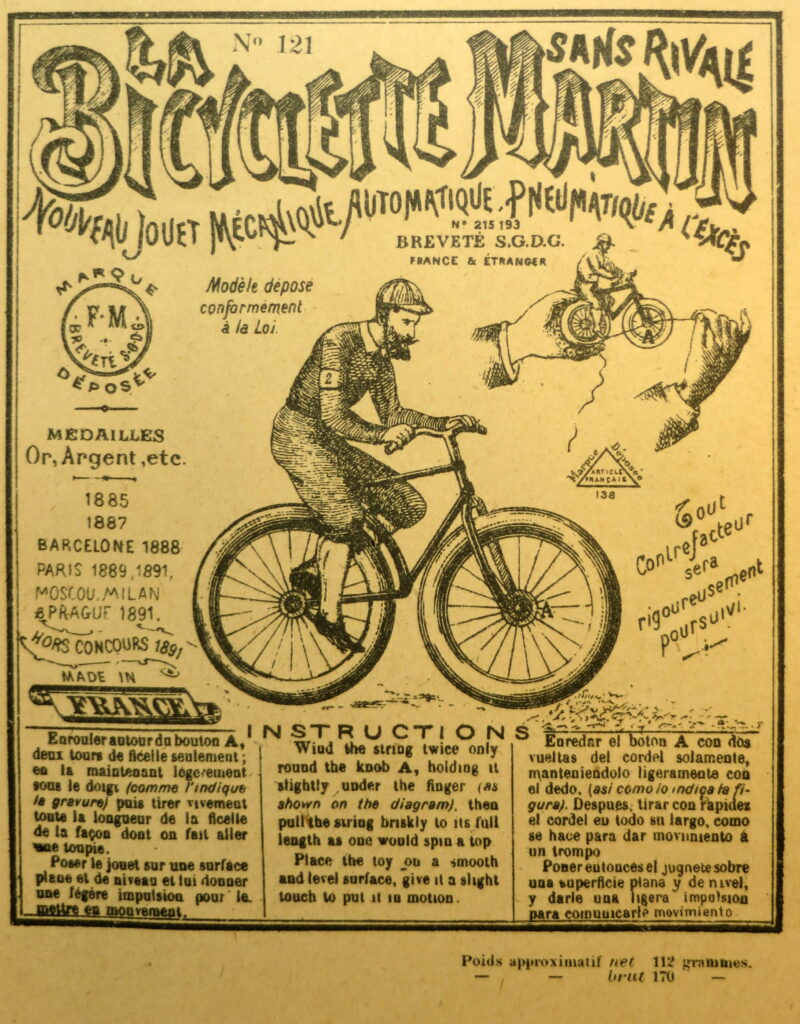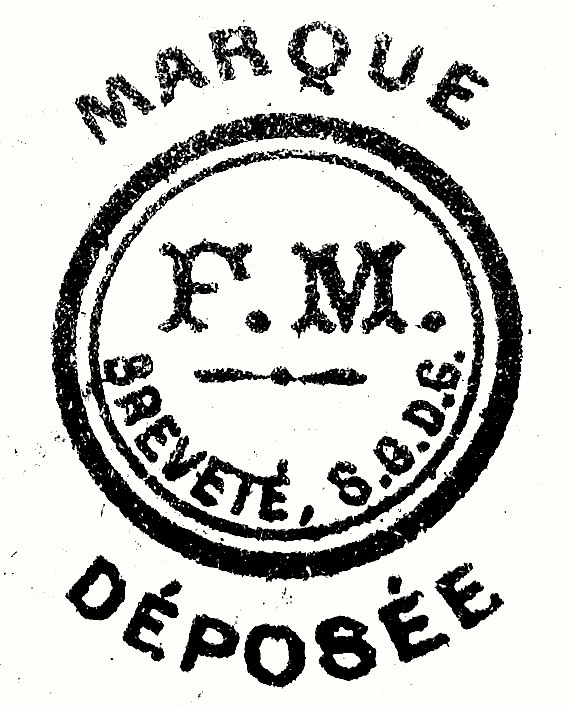I found an article in an old French technical magazine La Nature from 1892 about a tin toy made by Martin.
This piece is put in motion when a string is wound around this reel, and pulling forcefully, the rotation of the the wheel is determined by an internal flywheel.
When the bicyclette is placed on the floor, it travels at high speed.
It was first made in 1892
length approx 13.6cm ( 5.35 inch)
The Martin article number is 121
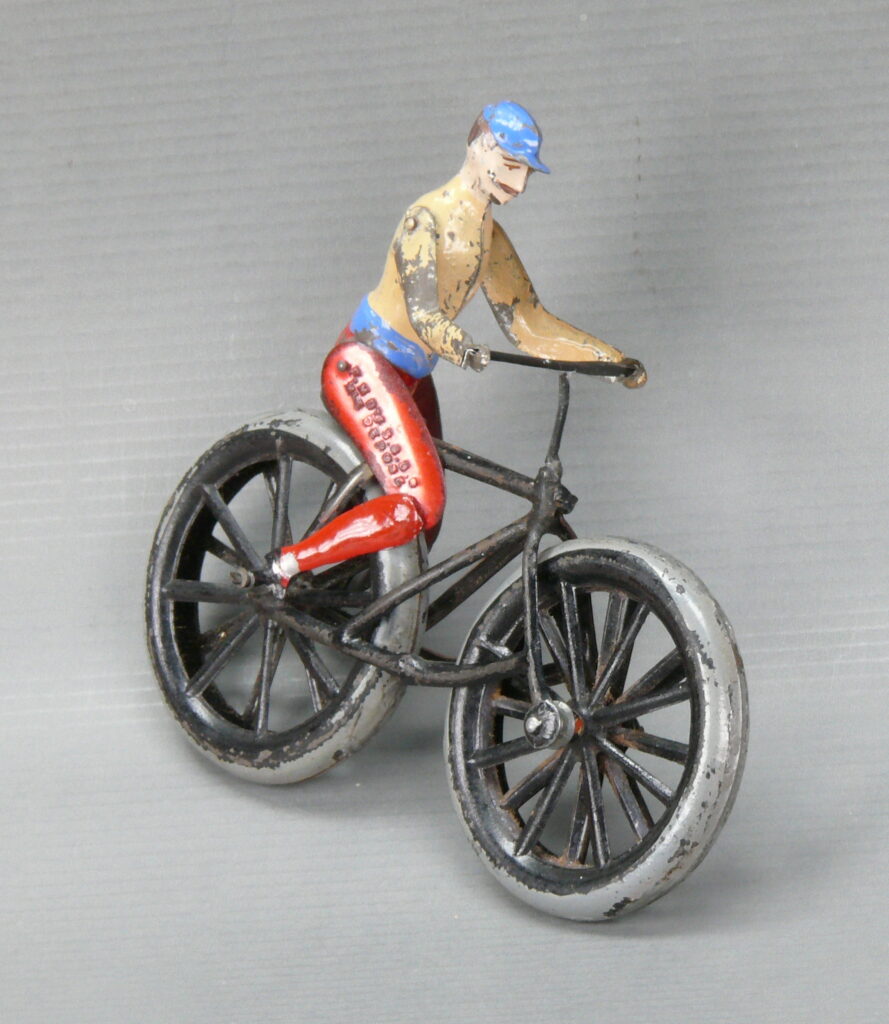
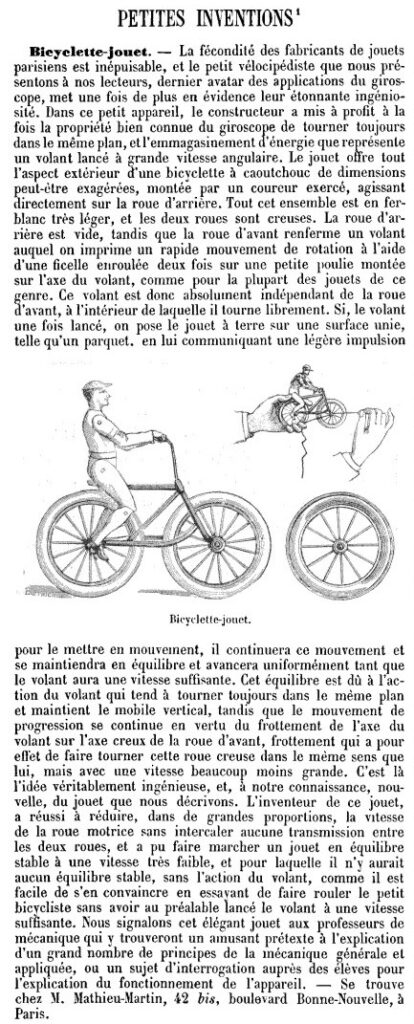
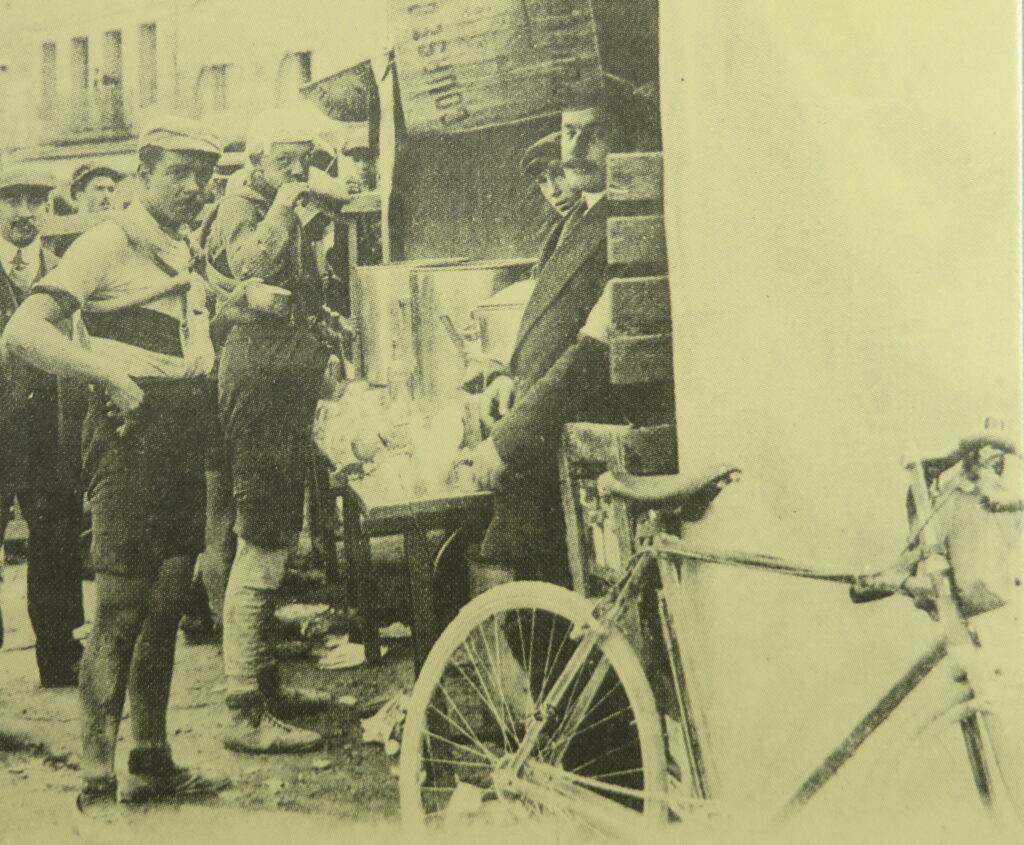
The free translation of the above text :
SMALL INVENTIONS
Toy bicycle.
The fruitfulness of Parisian toy manufacturers is inexhaustible, and this little cyclist that we present to our readers, the latest avatar of the applications of the giroscope, once again highlights their astonishing ingenuity.
In this small device, the manufacturer has taken advantage of both the well-known property of the giroscope to always rotate in the same plane, and the energy storage represented by a flywheel launched at high angular speed.
The toy offers all the exterior appearance of a “rubber” bicycle of perhaps exaggerated dimensions, mounted by an exercised rider, acting directly on the rear wheel.
This whole set is made of very light tin, and the two wheels are hollow.
The rear wheel is empty, while the front wheel contains a flywheel to which a rapid rotational movement is imparted with the aid of a string wound twice on a small pulley mounted on the axis of the flywheel, as for most toys like this.
This steering wheel is therefore absolutely independent of the front wheel. inside which it rotates freely.
If, once the shuttlecock has been launched, the toy is placed on the ground on a level surface, such as a parquet floor. giving it a slight impulse to the moving master, it will continue this movement and maintain balance and advance evenly as long as the flywheel has sufficient speed.
This equilibrium is due to the action of the flywheel which tends to turn always in the same plane and maintains the mobile vertical, while its forward movement continues by virtue of the friction of the axis of the flywheel on the hollow axis of the wheel. front wheel, friction which has the effect of turning this hollow wheel in the same way as it, but with a much slower speed.
This is the truly ingenious, and, to our knowledge, new, idea of the toy that we are describing.
The inventor of this toy, succeeded in reducing, in great proportions, the speed of the driving wheel without inserting any transmission between the two wheels, and was able to make a toy run in stable equilibrium at a very low speed, was for which there would be no stable equilibrium without the action of the steering wheel, as it is easy to convince oneself of this by trying to make the little cyclist roll without having first thrown the steering wheel at a sufficient speed. We would like to point out this elegant toy to mechanics teachers who will find in it an amusing pretext for explaining a large number of principles of general and applied mechanics, or an idea of intergrouping with students for the explanation of the operation of the toy
Can be found at M. Mathieu-Martin’s, 42 bis, boulevard Bonne-Nouvelle, Paris.
